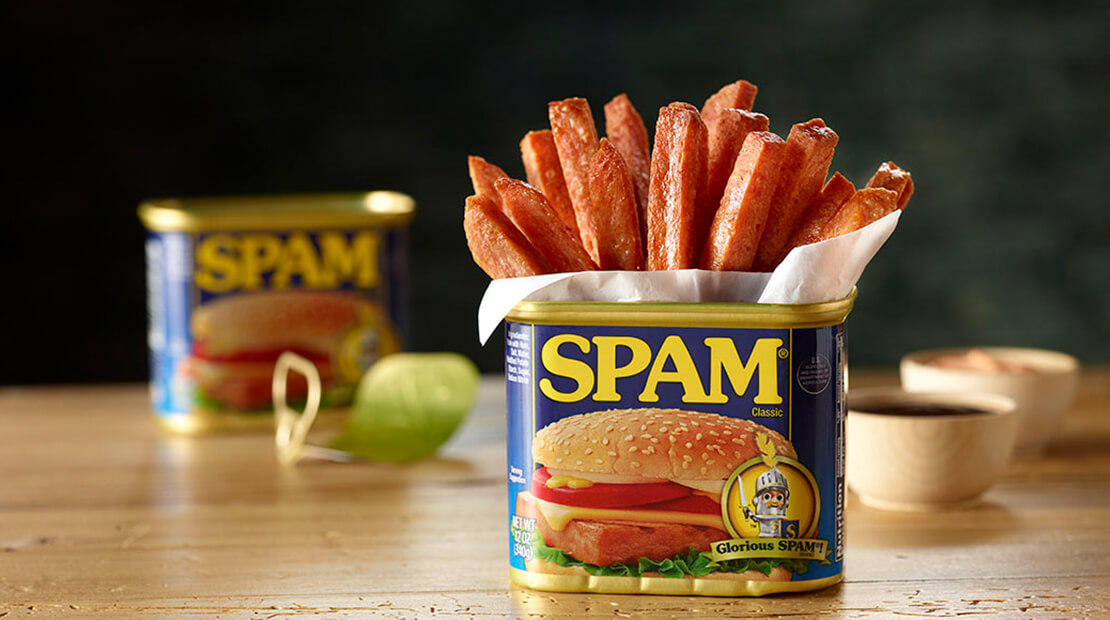Brands
How Do You Solve A Problem Like Excess Pork Shoulder Inventory?

MinnPost
George A. Hormel, a child of German immigrants, was born in Buffalo, New York, in 1860. After working in the meat packing industry, he moved to Austin, Minnesota, and started the George A. Hormel Company at the age of thirty-one. His one son, Jay, became company president when George retired after leading the company for thirty-six years. (In 1993, the company’s name changed to Hormel Foods Corporation.)
In the late 1930s, Jay Hormel awarded Kenneth Daigneau a $100 prize for suggesting the name SPAM for the company’s new pork product. Daigneau’s original intended meaning is unclear, but it is thought to be an abbreviation of Spiced Ham.
In the 1940s, Hormel supported the World War II effort by shipping more than one million cans of SPAM abroad to feed Allied troops and civilians. It is ideal for mass feeding since it does not require refrigeration and has a long expiration date. SPAM was so readily available for military meals, often two or three a day, that many would not eat it when they returned home to their civilian lives. In an early recycling program, flattened SPAM cans were soldered on airplane bomber wings and fuselages to cover and patch bullet holes created by enemy bullets. The cans were also reshaped to make military cookware. During World War II, 1,751 Hormel employees were in the military; sixty-seven of them died while serving.
Early advertising used catchy phrases and full-page color ads to promote SPAM. A 1960s advertisement stated that “you can serve it cold, you can serve it hot, you can slice it, dice it, bake it, fry it.” As time progressed, the varieties of SPAM produced by Hormel expanded to match the tastes of their fans and worldwide markets. A can of SPAM Classic, the original SPAM, consists of pork, ham, and five other basic ingredients—salt, water, potato starch, sugar, and sodium nitrite. Other varieties include turkey, hickory smoke, hot and spicy, jalapeno, teriyaki, chorizo, Portuguese sausage seasoning, and mezclita (Puerto Rican-inspired, with red pepper and cheese).